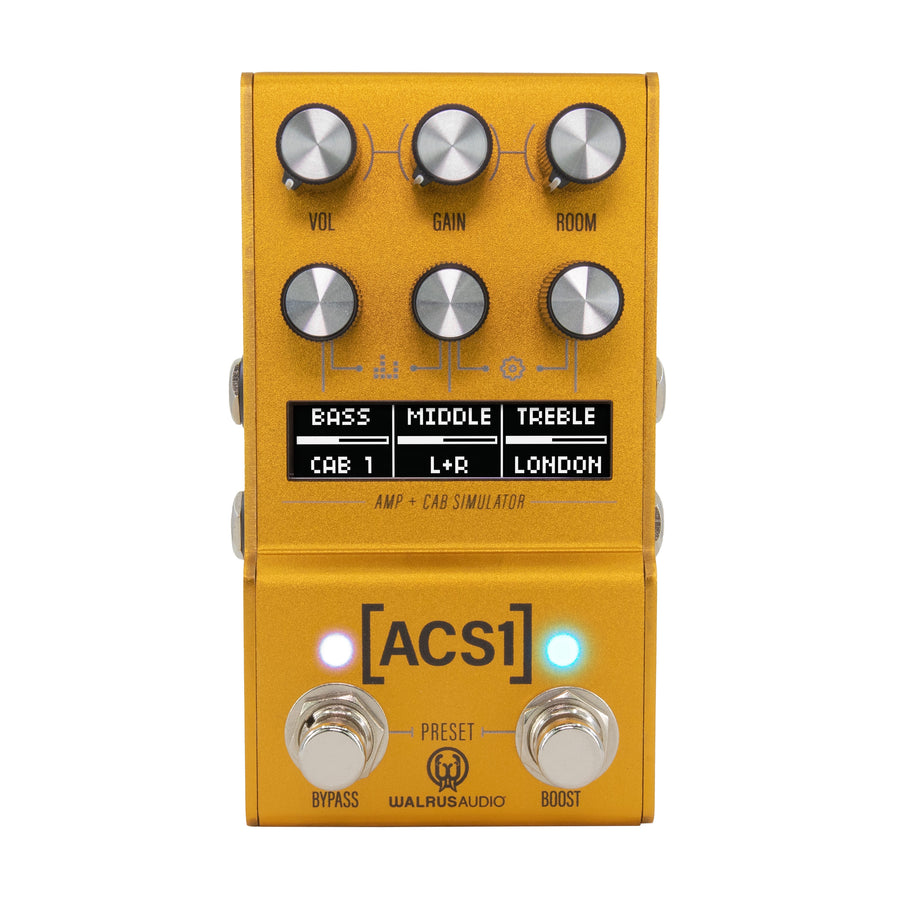
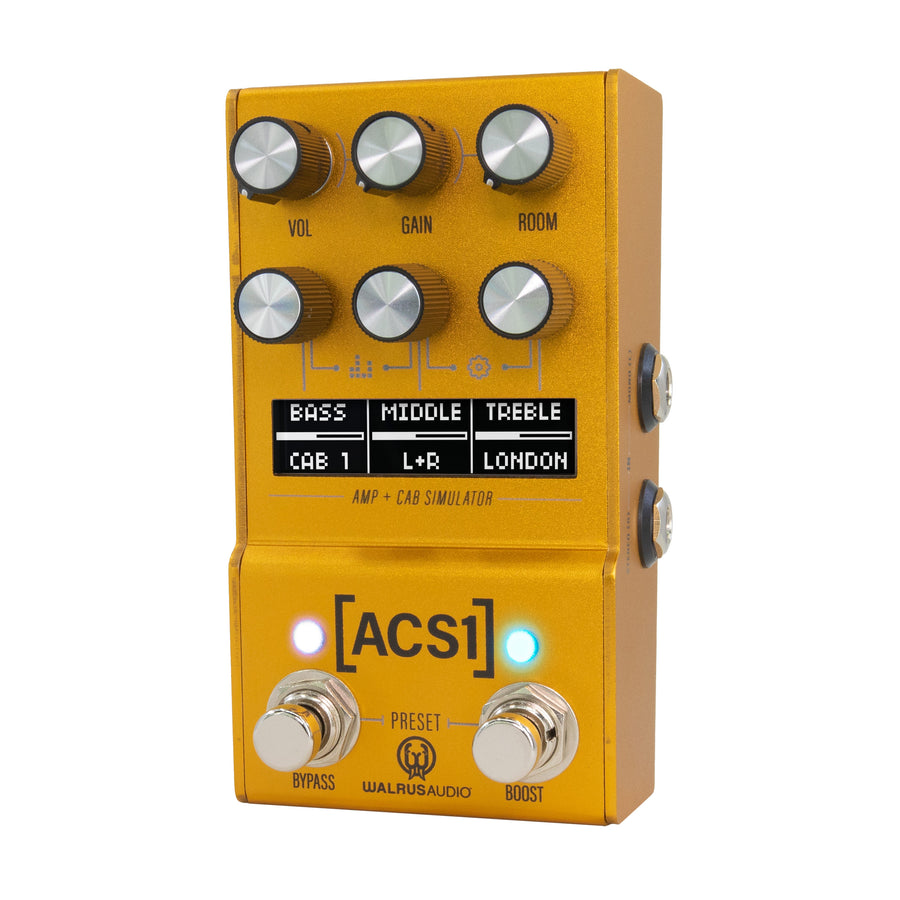
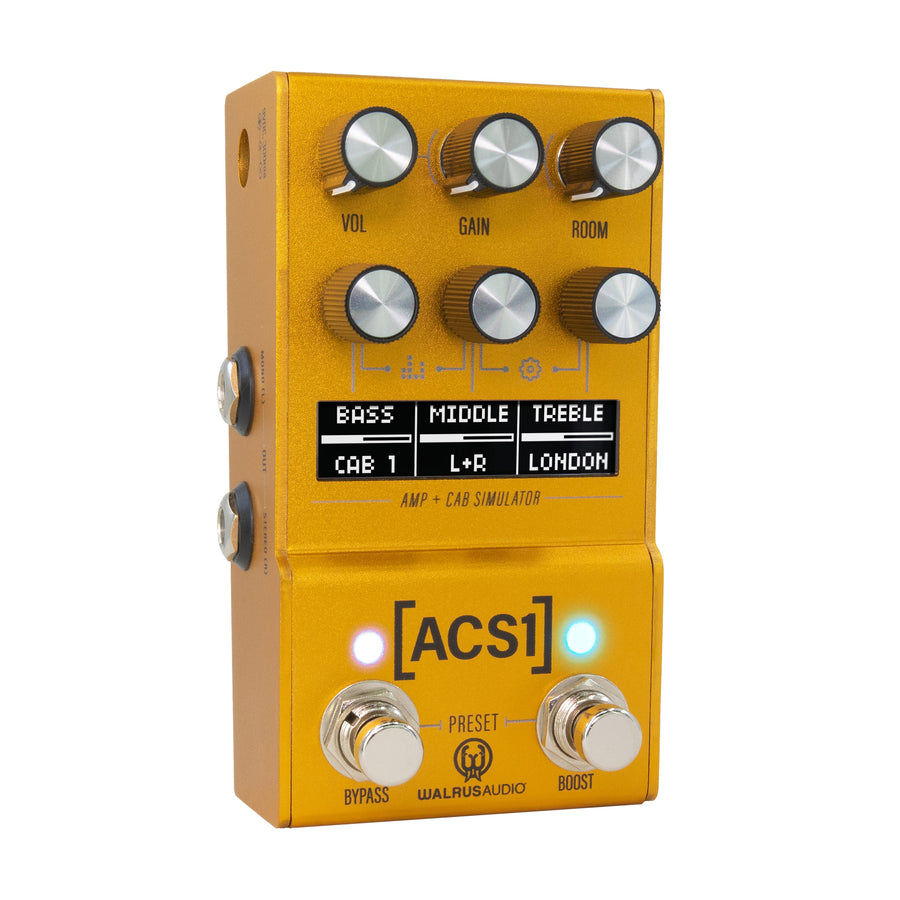
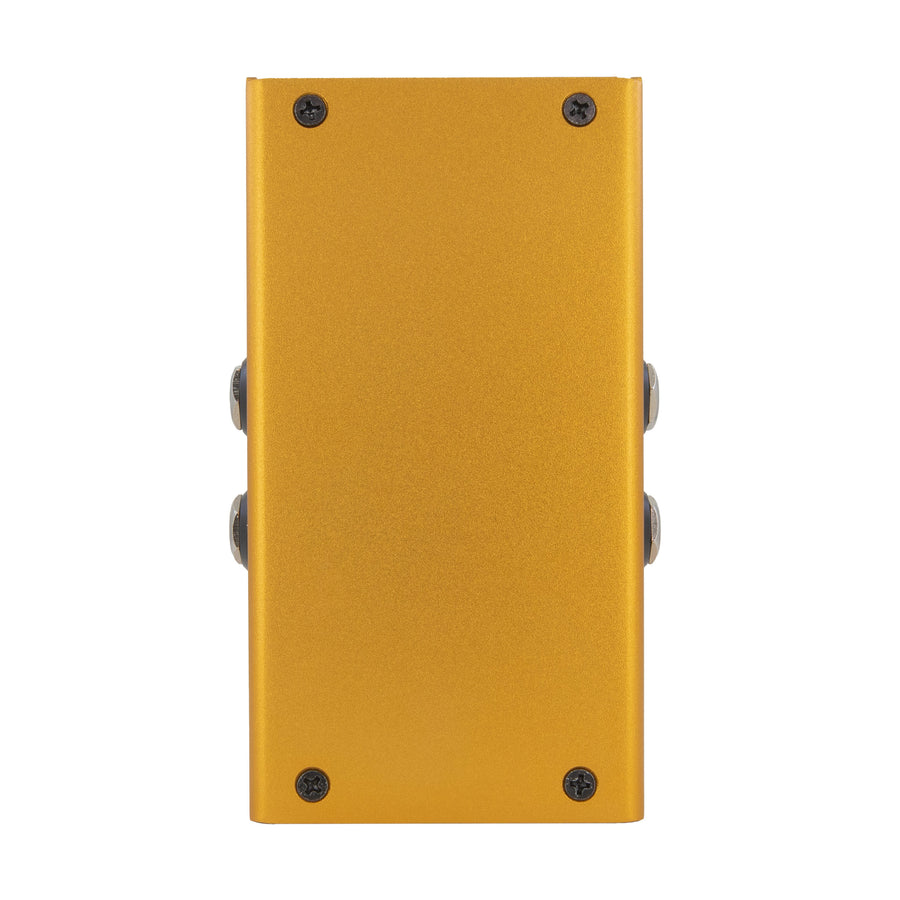
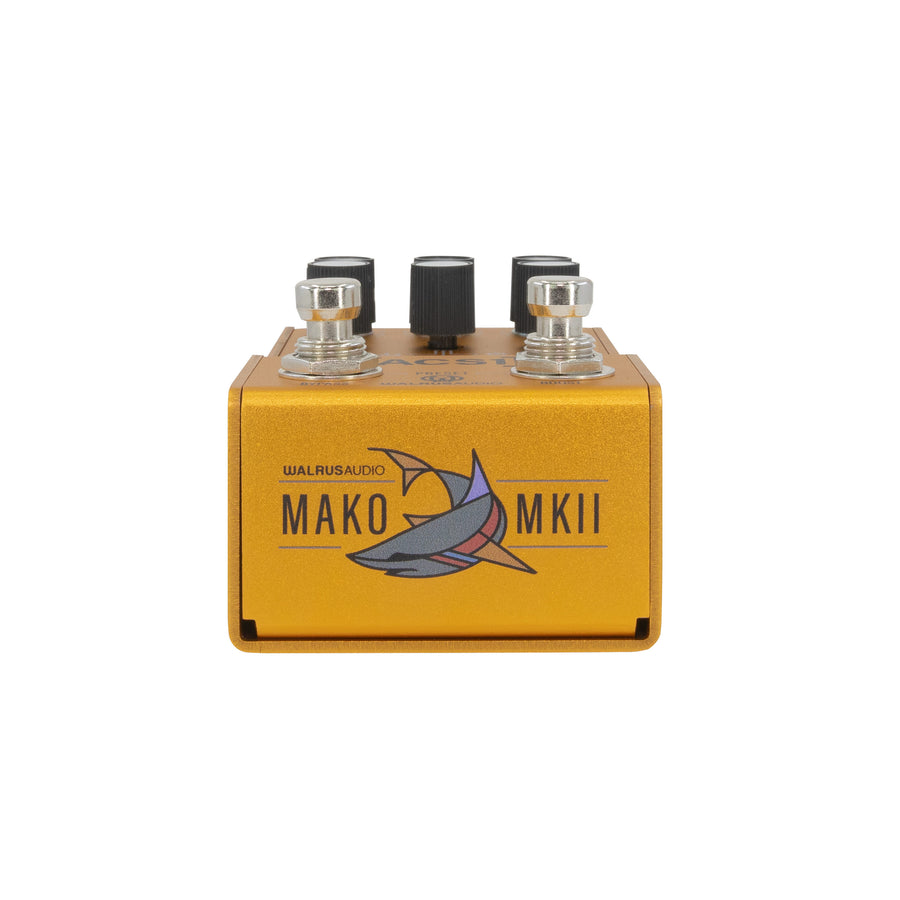
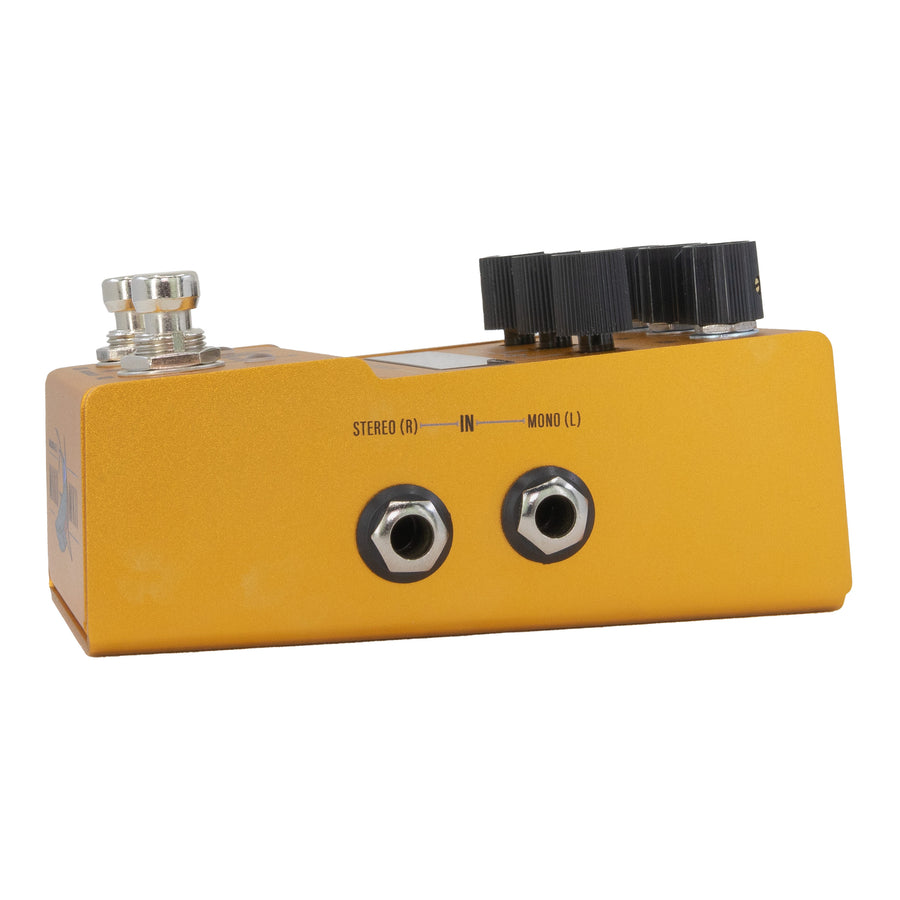
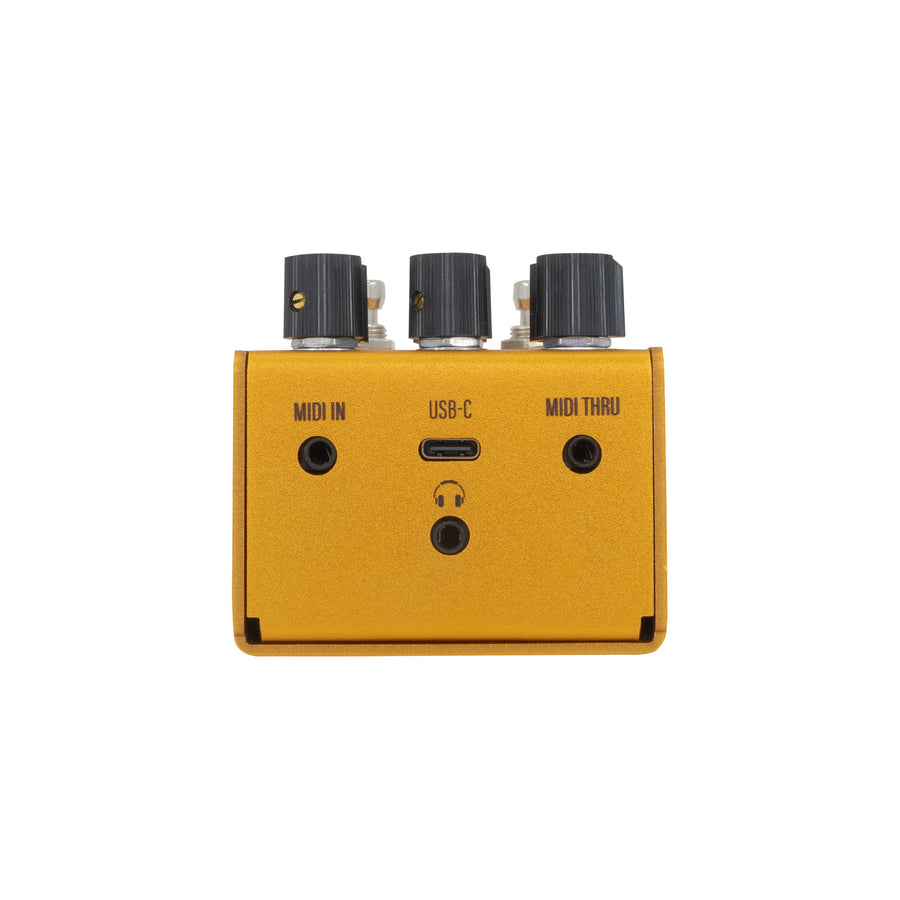
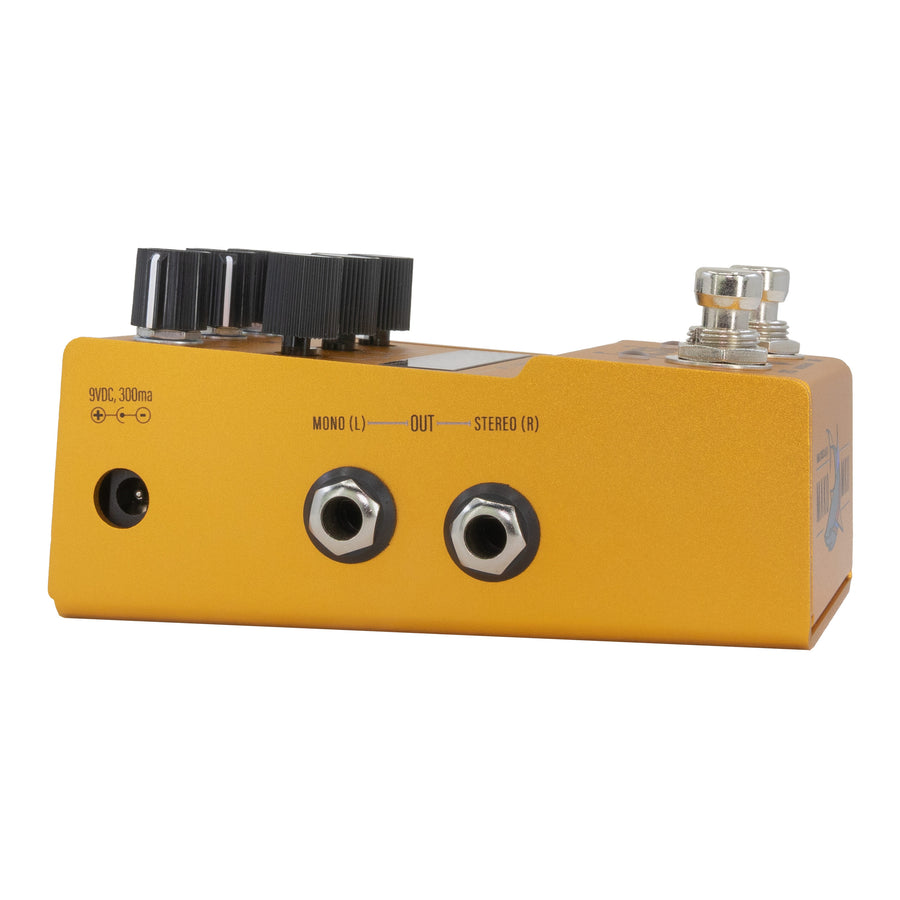
Mako Series MKII: ACS1 Amp + Cab Simulator
The [ACS1]™ is an amplifier and speaker cab simulator delivering the sound and feel of world-class amplifiers, complimentary speaker cabinet IRs created by Tone Factor and York Audio, and controllable room size. With the ACS1, players have expansive options to deliver their tone on stage, in the studio, or practicing at home. Simple controls, stereo in and out, onboard presets, and MIDI support make the ACS1 an essential tool in a guitarist's arsenal. Players can also load in their own IRs and update firmware at walrusaudio.io.
The [ACS1]™ is an amplifier and speaker cab simulator delivering the sound and feel of world-class amplifiers, complimentary speaker cabinet IRs created by Tone Factor and York Audio, and controllable room size. With the ACS1, players have expansive options to deliver their tone on stage, in the studio, or practicing at home. Simple controls, stereo in and out, onboard presets, and MIDI support make the ACS1 an essential tool in a guitarist's arsenal. Players can also load in their own IRs and update firmware at walrusaudio.io.
The ACS1 contains six amplifier models based on fan-favorite amps, each with its place in music history, and twelve cab IRs (Impulse Responses) designed by world-class designers to give you the best tonal representation possible. The stock IRs for the Fullerton, London, and Dartford amp models were custom-engineered by David Hislop and Kenyon Reed at Tone Factor, while the stock IRs for the Red, Citrus, and Tread amp models were designed by Justin York at York Audio.
Amplifiers
The ACS1 can mix and match stereo amp and cab combinations. Want to run an AC30-style amp on the left and an Orange-style amp on the right? Or perhaps a 5150 flavored amp in both channels but with two different cabs for a wider stereo sound? When running the ACS1 in stereo, one amp can be used through both channels, or these combinations can be run independently left and right if you choose, leading to powerful, unique amp tones. Simply press down on the Middle encoder to choose individual settings for L, R, or L+R combined. Amps can be mixed and matched with no phase/polarity issues as well.
Onboard models include:
Three Vintage Amp Models
Fullerton - Inspired by the classically bright and clear Fender® Deluxe Reverb. Crisp clean tones with loads of headroom that players have come to love over the years.
London - Inspired by a 1962 Marshall® Bluesbreaker with a harmonically rich, valve-driven breakup. Articulate and sensitive response.
Dartford - Inspired by the legendary jangly high-end tones from a 1960s Vox® AC30 with all the bite and chime from the British Invasion.
Three High Gain Amp Models
Red: Inspired by the distinctively raw and punchy Peavey® 5150, producing heavy, aggressive modern metal and hard rock sounds. Powerful and saturated with a tight low end, strong midrange, and a bright, cutting high end.
Citrus: Inspired by the warm, rich, and harmonically complex Orange® Rockerverb. Classic British gain with a creamy midrange and punchy lows. Maintains clarity and definition across its entire tonal spectrum, even at high-gain settings.
Tread: Inspired by the world-famous Mesa Boogie® Dual Rectifier with massive amounts of in-your-face gain. Versatile enough to be favored by guitarists in genres from hard rock, punk, metal, and more, Tread offers up plenty of saturation that’s heavy and ready to cut through the mix.
Cabinet IRs
The ACS1 includes six IRs custom-engineered by David Hislop and Kenyon Reed at Tone Factor and six by Justin York of York Audio. Each IR has been created with vintage and modern amps to deliver the best tonal representation possible.
Users also have the option to load their own IRs via our customer web app found at walrusaudio.io.
Additional ACS1 Settings/Features
Primary Controls
Volume, gain, and room make up the top three knobs. Volume and gain work together, as gain is increased and made louder, volume can be turned down to compensate.
Room
The ACS1 has three different types of reverb effects:
Room - Simulates the size of the room that your amp and cabinet are in. At zero, it would resemble tracking your amp in an isolated environment with no reverb. At max would emulate a natural-sounding, large studio environment.
Hall - Simulates the acoustics of a large, live sound space.
Spring - Simulates spring reverb tanks found in tube amps.
Increase the room size or amount of reverb by adjusting the Room knob. The further clockwise you go, the bigger the room. Decay control can be adjusted for room in the Global Sound menu.
Bass/Mid/Treble EQ
Bass, mid, and treble control are adjustable on the home screen with the use of the encoder knobs. The left knob controls bass, the middle is mids, and the right is treble. This simple EQ control has clear visual feedback and can be used to adjust levels on the L, R, and L+R channels.
Noise Gate
A noise gate can be applied and adjusted within the navigation menu, which can be especially helpful when playing with the high-gain amp models.
Amp EQ
Presence and resonance controls are available within Amp EQ Settings in the menu, giving you even more control of your amp tone.
(Access the settings for noise gate, Amp EQ, and more by clicking the bottom left and middle encoder knobs simultaneously).
Bypass IRs or Amps
Cab IRs as well as amp models can both be bypassed with the ACS1, making it more flexible for ampless rigs that still have physical cabs, and vice versa. Access these settings by clicking the bottom middle and right encoder knobs simultaneously.
Presets
Save up to three presets onboard by dialing in your favorite sound then pressing and holding the bypass and boost switch simultaneously. Both LEDs will flash confirming your settings were saved. Cycle through presets by pressing and releasing bypass and boost simultaneously. The pedal will cycle through the three onboard presets - red, green, and blue. Additional banks and presets can be accessed in the Global Sound menu by pressing down the Left and Middle encoders simultaneously. When power is removed from the pedal, it will boot up in the last used preset. Using MIDI, up to 128 presets can be saved and recalled.
- True Bypass and Buffered Bypass
- The ACS1 MKII comes in an anodized gold finish with black and green ink.
- The 2in OLED screen measures 128x32 pixels.
- The enclosure’s exact size with knobs is 4.9” x 2.52” x 2.64”.
- Power requirements are 9VDC (300mA minimum).
- The use of an isolated power supply is recommended for powering all Walrus Audio Pedals. Daisy chain power supplies are not recommended. Power supply not included.
- 24-bit 48kHz A/D and D/A converters for high quality audio.
- 32-Bit floating point processing.
- Sharc & ARM co-processors.
- Update firmware and load IR cabinets at www.walrusaudio.io

